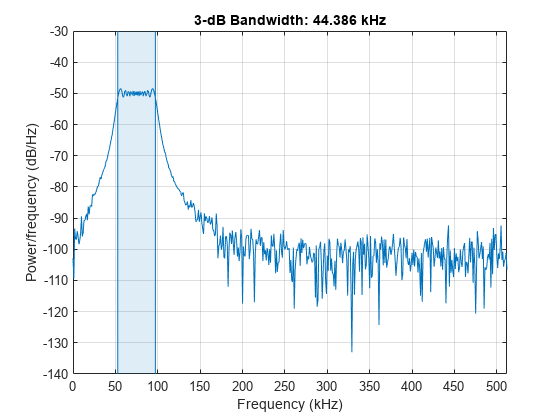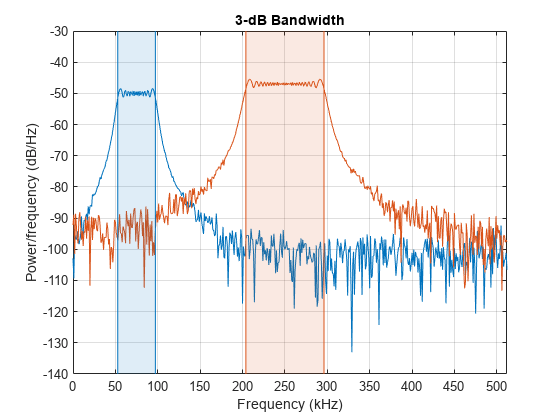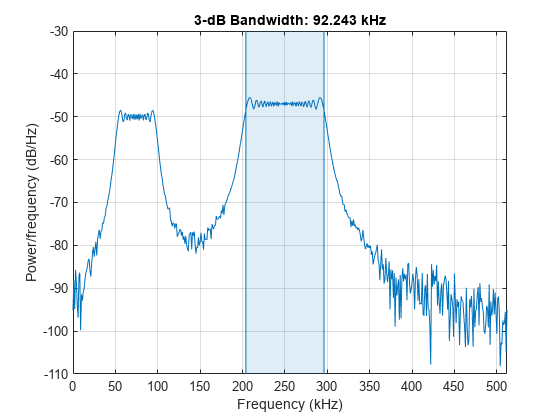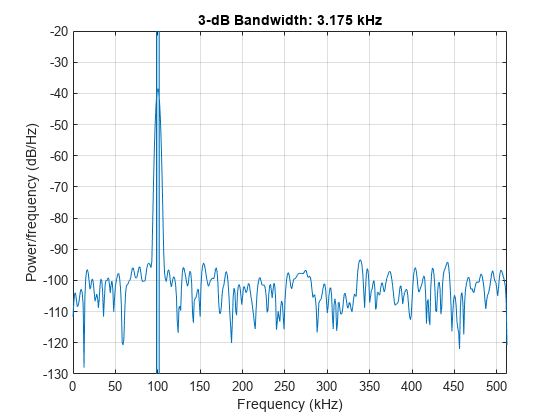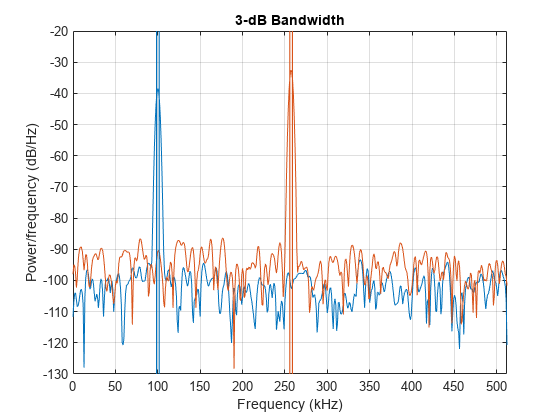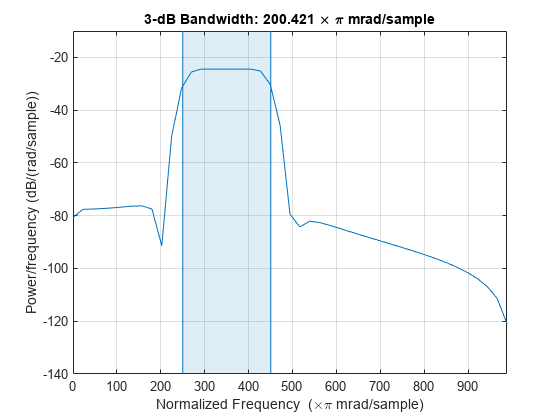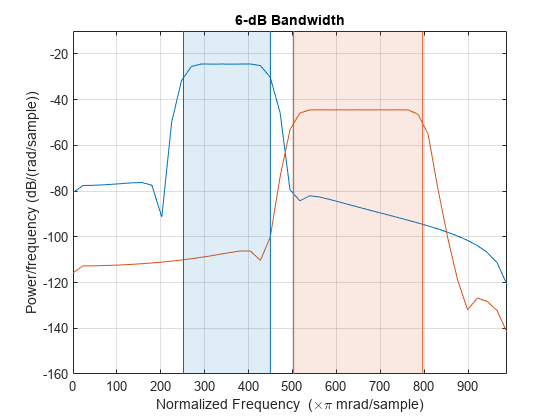powerbw
Power bandwidth
Syntax
Description
bw = powerbw(___,freqlims,r)Fs or
f. If the second input is passed as empty,
powerbw assumes a normalized frequency. The
function computes the difference in frequency between the points where the
spectrum drops below the reference level by r dB or reaches
an endpoint.
powerbw(___) with no output
arguments plots the PSD or power spectrum in the current figure window
and annotates the bandwidth.
Examples
Input Arguments
Output Arguments
Algorithms
To determine the 3 dB bandwidth, powerbw computes a periodogram power
spectrum estimate using a rectangular window and uses the highest estimate as a
reference level. The bandwidth is the difference in frequency between the points where
the spectrum drops at least 3 dB below the reference level. If the signal reaches one of
its endpoints before dropping by 3 dB, then powerbw uses the endpoint
to compute the difference.
You can obtain the same value of the 3 dB bandwidth, bw, from a
signal x at a sample rate Fs in these
three ways.
| Directly from the signal |
bw = powerbw(x,Fs) |
| From the periodogram of the signal |
[P,F] = periodogram(x,[],length(x),Fs); bw = powerbw(P,F) |
| From the power spectral estimate (Welch's PSD) of the signal |
[P,F] = pwelch(x,rectwin(length(x)),[],length(x),Fs); bw = powerbw(P,F) |
Note
Because powerbw uses an intermediary representation
to transform the input signal from the time domain to frequency domain, the
returned power bandwidth might vary, depending on the signal transformation
method, number of DFT points, and window size.
Extended Capabilities
Version History
Introduced in R2015aSee Also
bandpower | obw | periodogram | plomb | pwelch
